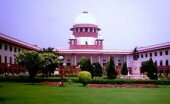Recipe for a Tussle: Constitution Drafting in Nepal
Written by Arghya // March 22, 2012 // National Politics // 1 Comment
[A guest post by advocate Semanta Dahal arguing against the recent proposal in the Nepalese Constituent Assembly for a separate Constitutional Court purely for constitutional adjudication. Heady times indeed for constitution-drafting!]
(First Published in The Kathmandu Post)
Here we are, less than three months away from the Constituent Assembly’s fast-approaching deadline to draft a new constitution, and we’re left stranded yet again with little idea about the timely delivery of the new constitution.
The question of forms of governance and state restructuring are the major bones of contention among the political parties. But even with other outstanding constitution making issues which were settled by the Dispute Resolution Subcommittee, all-embracing satisfaction is far from reality. This is especially true with regard to the compromise reached to establish a parallel to the existing Supreme Court—another judicial forum called the Constitutional Court—for arbitrating constitutional matters. Apart from a few countable constitutional scholars, all senior members of the Bar, including the President of the Nepal Bar Association, have resented this idea. Even more so, the otherwise taciturn Supreme Court justices have voiced their opinions strongly and have called this compromise a deliberate attempt at decimating the independence of the judiciary.
The agreement to create a Constitutional Court was reached in March last year. For the iconoclastic Maoist leaders, independence of the judiciary doesn’t figure in as an important element of democracy and the rule of law. The Maoists wanted a judiciary accountable to the parliament, and other higher organs of state, and were in favour of a judicial committee within the parliament taking decisions insofar as the interpretation of the constitution was concerned. The rest of the parties, including the Nepali Congress and CPN-UML, felt that this scheme didn’t fit well into the Montesquieu’s tripartite system and thus the Constitutional Court was offered as a viable solution to achieve some semblance of judicial independence.
As per the proposed scheme, the Constitutional Court will comprise of the Chief Justice of Nepal and five other judges, and it will have the constitutional jurisdiction to exposit on constitutional issues and disputes between the central government and the provinces, and between the provincial governments.
Certainly, this is a commendable proposition. A specialised court with judges with constitutional “expertise” is perhaps what the nation requires to resolve serious constitutional disputes. But I don’t agree. Constitutional law is a basic foundational course for law students and a mere post-graduate education in constitutional law is not the only yardstick for measuring a person’s knowledge in constitutional law. Further, there are other problems associated in vesting exclusive jurisdiction to special courts only over constitutional matters. Constitutional law cannot be treated as a hermitically contained body, impervious from the effects of other branches of law. Being the fundamental law of the land, constitutional law is in constant interaction with other law streams. For instance, right to fair trial in a criminal proceeding is a constitutional law question, rather than a criminal law question.
The constitution-makers ingeniously copied the idea of a Constitutional Court primarily from the much touted South African constitution and from the legal tradition of countries following the codified civil law system. But even South Africa cannot be categorised into a pure common law country; it is a hybrid legal system where there is a confluence between the Romanic-Dutch system and English common law principles. Although in our nation, a modern legal system was initially code-based, it has now fully evolved into a common law country and stare decisis (a legal principle by which judges are obliged to respect the precedents established by prior decisions) is a major doctrine influencing our court’s decisions. So is it a good idea to create a separate and special Constitutional Court in country like ours which has now firmly adopted the common law system?
My answer will be negative because all common law jurisdictions worldwide have only the Supreme Court as the highest judicial authority to interpret the constitution. Even in the South African case, a bill is tabled before parliament to make amendments to its constitution to enlarge the scope of the jurisdiction of its Constitutional Court. This is because there is no neat division between constitutional and other legal issues and lawyers will always find a constitutional issue inextricably interlinked with banking, criminal, company or even revenue law disputes. Thus a litigant may find himself or herself in a game of tennis played between the Supreme Court and the Constitutional Court.
The agreement to create a Constitutional Court was reached with blithe disregard to the views of the senior Bar leaders and Supreme Court justices and must be reviewed. Our Supreme Court has never been negligent when entrusted with the duty to interpret the constitution, although the decisions may have been controversial because leading constitutional cases have strong political overtones.
Two parallel courts at an apex level can convolute the country’s legal system. Hence the more amicable solution the constitution makers can adopt to reform the nation’s constitutional jurisprudence is a bench of judges within the Supreme Court, who can sit in a group, or larger benches to hear the issues which emanate substantially from the constitutional text and require interpretation. This will avoid jurisdictional overlapping and a consequential turf tussle between the Supreme Court and the Constitutional Court.
[Semanta tweets @the3rdbranch and can be contacted at [email protected]]
[Image Credit: Samsujata under the Creative Commons CC-BY-3.0 License]





One Comment on "Recipe for a Tussle: Constitution Drafting in Nepal"
Hello, the whole thing is going sound here and ofcourse every one is sharing data, that’s genuinely
fine, keep up writing.